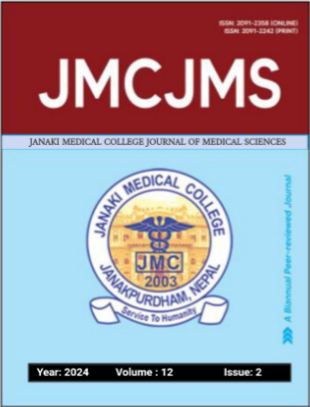Patterns and perception of complementary and alternative medicine use among people with non-communicable diseases in Eastern Nepal
DOI:
https://doi.org/10.3126/jmcjms.v12i02.68414Keywords:
Complementary and alternative medicine, Pattern, PerceptionAbstract
Background & Objectives: Complementary and Alternative Medicine (CAM) uses and values have increased throughout the world during the last decades. There are patients with non-communicable diseases with practices CAM without or alongside. This study aims to assess the patterns and perceptions of CAM use among community people with non-communicable diseases.
Materials and Methods: A cross-sectional study was conducted among 156 people with NCDs in Itahari sub-metropolitan city. Data was collected using the interview method through a semi-structured questionnaire for assessing the Pattern and Perception of CAM use. Descriptive and inferential statistics as chi-square test was used to find an association between CAM use and selected demographic variables.
Results: The findings of the study concluded that about half (40.4%) of respondents reported the use of Complementary and Alternative Medicine. Of them, the majority (80.9%) of respondents stated the use of dietary modification followed by three fourth (74.6%) of herbal intake. Similarly, about three fourth (71.4%) of participants used it to treat a long-term health condition that lasted for more than one month or its symptoms. All of the respondents (100%) had a positive perception regarding its use. Furthermore, age and types of family are found to be associated with the use of CAM.
Conclusion: The study concluded that less than half of respondents reported the use of Complementary and Alternative Medicine and all of the respondents had positive perceptions regarding its use. Furthermore, age and types of family are found to be associated with the use of CAM.
Downloads
Downloads
Published
How to Cite
Issue
Section
License
© JMCJMS, JMC, Janakpur, Nepal




